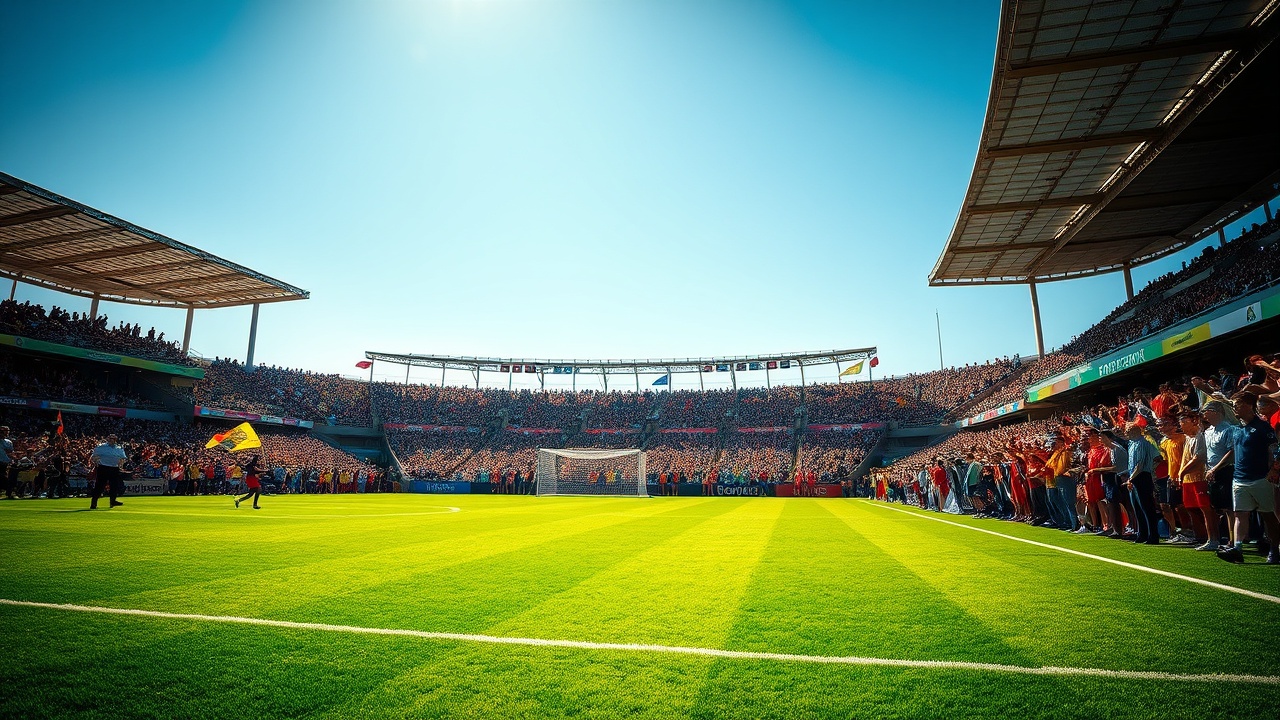Copa America and Its Implications
Last summer, the Copa America took place in the United States, showcasing elite national teams from both North and South America. This tournament was initially seen as a warm-up before the much-anticipated 2026 FIFA World Cup, which will be co-hosted by the U.S., Canada, and Mexico. However, it instead raised significant concerns regarding the quality of playing surfaces available in the U.S.
Players criticized the state of the fields, calling them “disaster” zones, while the organizing body, CONMEBOL, defended the conditions at these venues. This has led to increased scrutiny about whether the U.S. is adequately prepared for the World Cup, prompting FIFA to use this summer’s Club World Cup as a test case for venue readiness.
Upcoming Club World Cup and Venue Challenges
For the first time, the 32-team Club World Cup will take place across 12 venues in the U.S., most of which are primarily designed for NFL games. Among the star players expected to grace these matches are Kylian Mbappé, Erling Haaland, and Harry Kane. While fans look forward to prominent teams like Real Madrid and Manchester City competing, FIFA is keenly aware that the logistics surrounding the event are vital for the upcoming World Cup, touted as the largest edition ever.
Five stadiums, namely Mercedes-Benz Stadium (Atlanta), Hard Rock Stadium (Miami), Lumen Field (Seattle), Lincoln Financial Field (Philadelphia), and MetLife Stadium (East Rutherford, N.J.), are set to host both the Club World Cup in 2025 and the World Cup in 2026. However, these venues present unique challenges; specifically, they are primarily configured for artificial turf and some feature retractable roofs that hinder proper grass installation.
Critiques of Playing Conditions
CONMEBOL’s temporary workaround during the Copa America involved laying down grass overlays, a solution criticized for its inconsistency and susceptibility to damage. These overlays were assembled in sections, leading to uneven surfaces that players openly complained about.
Emiliano Martínez, goalkeeper for Argentina, referred to the pitch at Mercedes-Benz Stadium as a “disaster,” while U.S. Men’s National Team midfielder Weston McKennie echoed these sentiments, noting the frustrating playability of the patched-together grass.
FIFA’s Response and New Strategies
In response to last summer’s critiques, FIFA is implementing a new strategy to ensure that the fields meet their standards. Historically, no World Cup matches have occurred on artificial grass, and FIFA is committed to innovating ways to ensure plush playing conditions at NFL stadiums—determined to avoid the errors that marred the Copa America. FIFA’s senior pitch manager, Alan Ferguson, emphasized the challenge, noting the unprecedented nature of hosting a World Cup in three different countries.
During the Copa America, stadiums like Mercedes-Benz and MetLife, which primarily utilized artificial turf, faced intense scrutiny as they attempted to convert to natural grass moments before matches. Timing varied per stadium; for instance, the grass at Mercedes-Benz was installed just three days prior to the tournament’s start while Hard Rock Stadium’s field was laid two weeks in advance. Despite assurances from CONMEBOL that the fields were safe, the aesthetic quality left much to be desired for players.
Innovative Pitch Solutions
As FIFA gears up for the Club World Cup and the World Cup, they have eradicated the use of temporary overlays, opting instead for a new type of installation known as “shallow pitches.” This hybrid grass technology combines real and synthetic elements and can function effectively on-site for up to 60 days without needing replacement. During trials in March involving Nations League matches, U.S. players began adjusting to this innovative surface, with Tim Weah labeling it as “different” but manageable.
With the intense focus on these events, FIFA recognizes how pivotal the Club World Cup will be in showcasing improved field conditions ahead of the World Cup. Ferguson’s team is adapting their strategy to ensure that the playing surfaces not only meet FIFA’s standards but also allow players to perform at their best, addressing each stadium’s specific configuration and environmental challenges. The development and execution of these solutions signal FIFA’s commitment to avoiding the pitch-related incidents witnessed during the last summer’s Copa America, aiming for a flawless World Cup experience.




